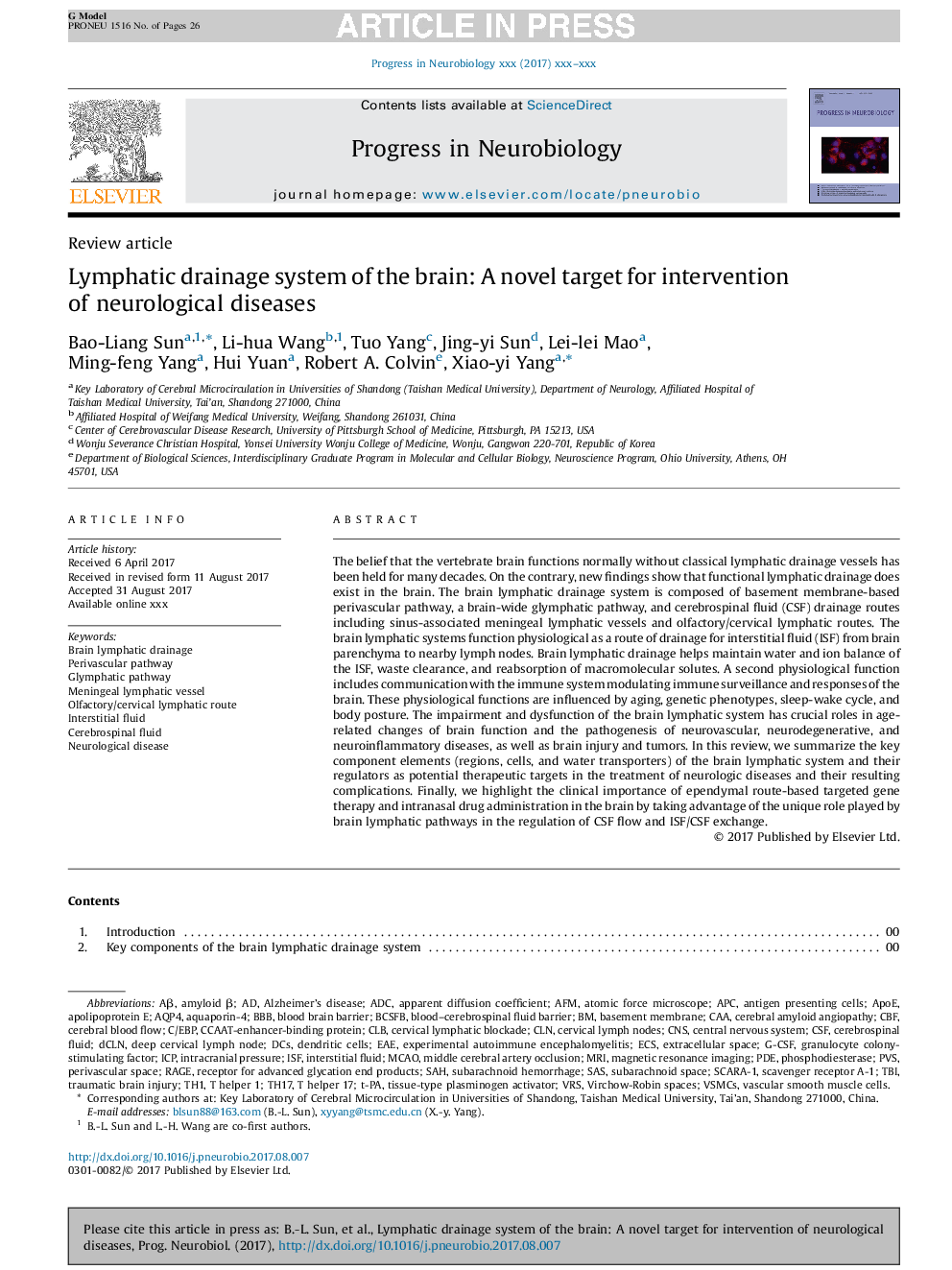| Article ID | Journal | Published Year | Pages | File Type |
|---|---|---|---|---|
| 8842183 | Progress in Neurobiology | 2018 | 26 Pages |
Abstract
The belief that the vertebrate brain functions normally without classical lymphatic drainage vessels has been held for many decades. On the contrary, new findings show that functional lymphatic drainage does exist in the brain. The brain lymphatic drainage system is composed of basement membrane-based perivascular pathway, a brain-wide glymphatic pathway, and cerebrospinal fluid (CSF) drainage routes including sinus-associated meningeal lymphatic vessels and olfactory/cervical lymphatic routes. The brain lymphatic systems function physiological as a route of drainage for interstitial fluid (ISF) from brain parenchyma to nearby lymph nodes. Brain lymphatic drainage helps maintain water and ion balance of the ISF, waste clearance, and reabsorption of macromolecular solutes. A second physiological function includes communication with the immune system modulating immune surveillance and responses of the brain. These physiological functions are influenced by aging, genetic phenotypes, sleep-wake cycle, and body posture. The impairment and dysfunction of the brain lymphatic system has crucial roles in age-related changes of brain function and the pathogenesis of neurovascular, neurodegenerative, and neuroinflammatory diseases, as well as brain injury and tumors. In this review, we summarize the key component elements (regions, cells, and water transporters) of the brain lymphatic system and their regulators as potential therapeutic targets in the treatment of neurologic diseases and their resulting complications. Finally, we highlight the clinical importance of ependymal route-based targeted gene therapy and intranasal drug administration in the brain by taking advantage of the unique role played by brain lymphatic pathways in the regulation of CSF flow and ISF/CSF exchange.
Keywords
PVSAPCSASCBFEAEMCAOAFMAquaporin-4DCsBCSFBSAHAQP4RAGEVRSTh17VSMCscLNTh1T helper 1T helper 17TBIVirchow-Robin spacest-PAAβICPPDECAAADCC/EBPECsTraumatic brain injuryamyloid βAntigen presenting cellsexperimental autoimmune encephalomyelitiscerebral amyloid angiopathyApoeapolipoprotein EMRImiddle cerebral artery occlusionCLBAlzheimer’s diseaseNeurological diseaseMagnetic resonance imagingcerebral blood flowSubarachnoid hemorrhageCNSblood brain barrierBBBDendritic cellsVascular smooth muscle cellscentral nervous systemapparent diffusion coefficientbasement membranegranulocyte colony-stimulating factorG-CSFPhosphodiesteraseintracranial pressureextracellular spaceSubarachnoid spacePerivascular spaceTissue-type plasminogen activatorBlood–cerebrospinal fluid barrierinterstitial fluidCSFCerebrospinal fluidAtomic Force MicroscopeISFCcaat-enhancer-binding proteinCervical lymph nodesReceptor for advanced glycation end products
Related Topics
Life Sciences
Neuroscience
Neuroscience (General)
Authors
Bao-Liang Sun, Li-hua Wang, Tuo Yang, Jing-yi Sun, Lei-lei Mao, Ming-feng Yang, Hui Yuan, Robert A. Colvin, Xiao-yi Yang,
